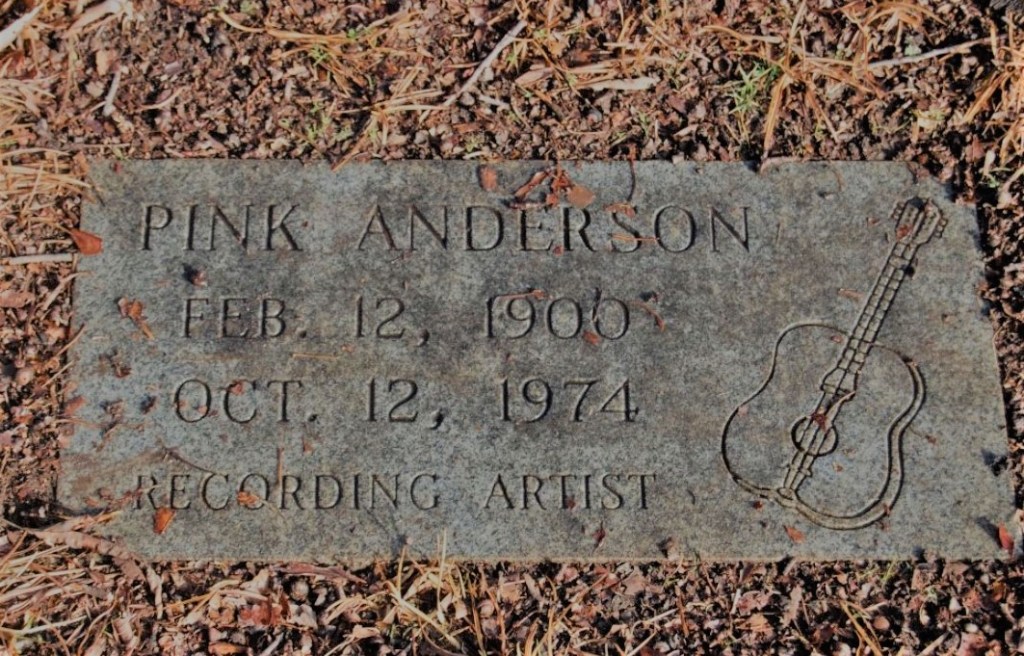
This blog will be confusing to some people because it will be about Pink Floyd and yet it won’t be. I will not be talking about Pink Floyd but rather about Pink and Floyd.
Pinkney “Pink” Anderson was an American blues singer and guitarist.
Anderson was born in Laurens, South Carolina, on February 12,1900 and was raised in nearby Greenville and Spartanburg.
He spent much of his career performing in traveling medicine shows, doing old minstrel, folk and ragtime tunes and even performing early blues numbers. As a child he made money by dancing and singing in the streets of Spartanburg, not far from where he was born. Around 1915 he formed a team with Simmie Dooley and hooked up with the “Dr. W.R. Kerr Indian Remedy Company Medicine Show” and traveled throughout the South for several years, entertaining crowds with their singing and dancing while the good doctor hawked his “miracle” cure-all. The pair are known to have cut two records for Columbia Records in 1928, but as far as is known, those are the only recordings they ever made.
In the late 1920s or early 1930s the pair broke up the act. Dooley left the “entertainment” business, but Anderson kept right on with traveling medicine shows up until the mid-’50s, when his declining health finally forced him to retire. In the 1960s, however, young fans of folk music “discovered” his music. He recorded a new album for Prestige Records, “Carolina Blues Man, Vol. 1”, in the early 1960s and made an appearance in a documentary about blues music and musicians, The Blues (1962).
Anderson was recorded by the folklorist Paul Clayton at the Virginia State Fair in May 1950. He recorded an album in the early 1960s and performed at some live venues.
Attempts by the folklorist Peter B. Lowry to record Anderson in 1970 were not successful, although apparently he could occasionally summon up some of his past abilities. A final tour took place in the early 1970s with the aid of Roy Book Binder, one of his students, taking him to Boston and New York City. Pink Anderson died on October 12, 1974 of a heart attack, at the age of 74. He is interred at Lincoln Memorial Gardens, in Spartanburg.

Floyd Council was an American blues guitarist, mandolin player, and singer. He was a practitioner of the Piedmont blues, which was popular in the southeastern United States in the 1920s and 1930s. He was sometimes credited as Dipper Boy Council and promoted as “The Devil’s Daddy-in-Law”.
He was born on Sept 2,1911 in Chapel Hill, North Carolina, to Harrie and Lizzie Council,
He began playing in the Chapel Hill, North Carolina area at clubs, with two brothers, Leo and Thomas Strowd, as the Chapel Hillbillies. recording a reported twenty seven songs, and backing Blind Boy Fuller on at least seven. He was considered one of the areas best guitarists. His throat muscles were partially paralysed by a stroke, but he made a final recording in 1970.
Council died on May 9, 1976 of a heart attack, after moving to Sanford, North Carolina. He was buried at White Oak AME Zion Cemetery in Sanford.

No records are available which exclusively feature Council’s work. The CD Carolina Blues features six songs he recorded: “I’m Grievin’ and I’m Worryin'”, “I Don’t Want No Hungry Woman”, “Lookin’ for My Baby”, “Poor and Ain’t Got a Dime”, “Runaway Man Blues” and “Working Man Blues”.
In a 1969 interview, Council stated he had recorded 27 songs over his career, seven of them backing Blind Boy Fuller. Fuller’s Complete Recorded Works contains many songs with Council playing guitar.
Syd Barrett, of the British rock band Pink Floyd, created the band’s name by juxtaposing the first names of Pink Anderson and North Carolina bluesman Floyd Council.
sources
https://www.imdb.com/name/nm5943597/bio
You must be logged in to post a comment.